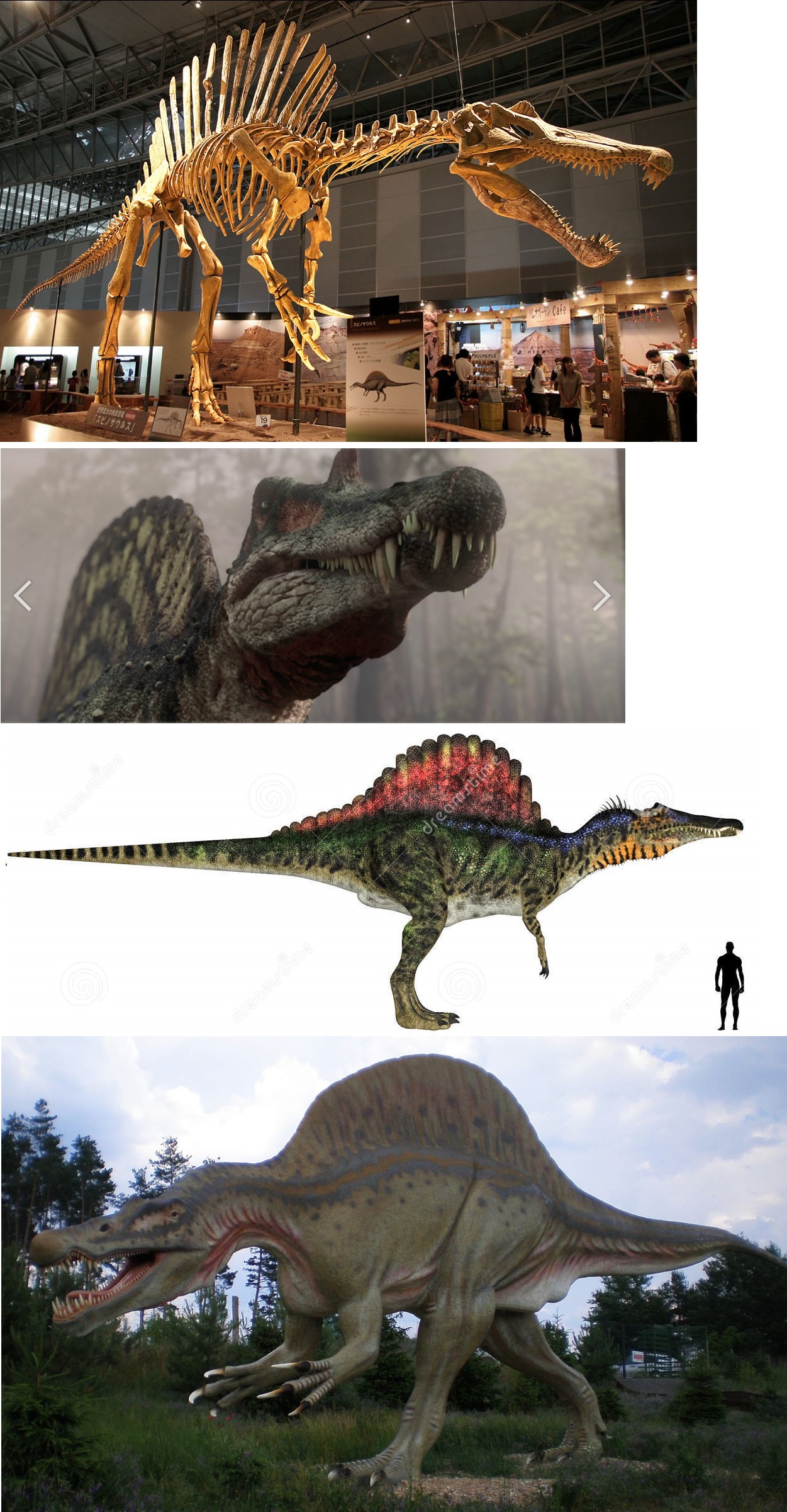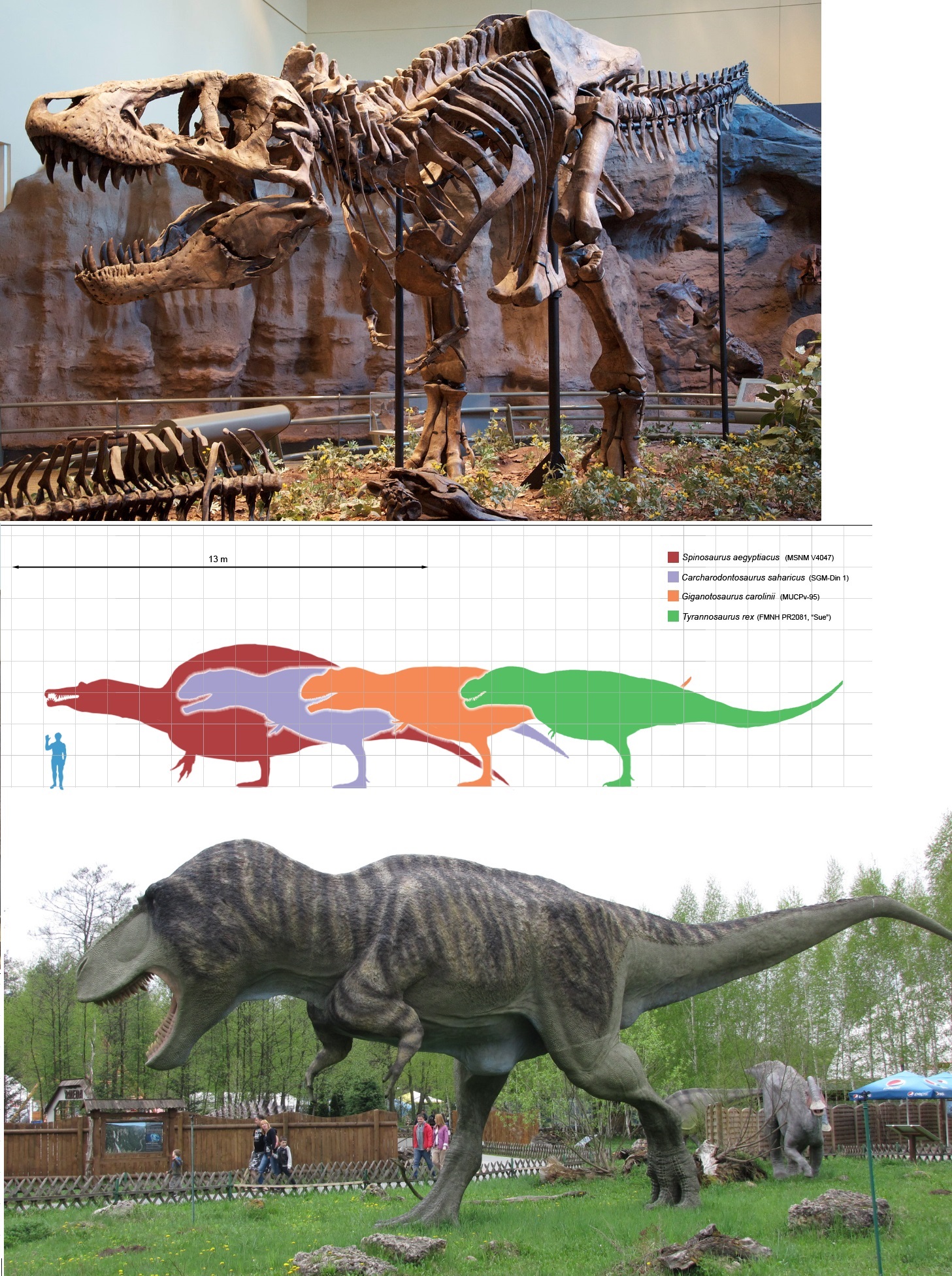
| Period: | Early Cretaceous period, at about 112 to about 95 million years ago. |
| weight: | Likey to be from 7 to 9 tons. However, some higher estimates go around too, even up to 21 tons. |
| Length: | Likely to be around 50 feet / 15 m. |
| Bite force: | Might even be as high as 2 tons. Different studies show large variations. |
| Further characteristics: | Powerfull longer claws (forearms). Longer, smaller snout. |
| Period: | Late Cretaceous period, at about 67 to about 65 million years ago. |
| weight: | Likey to be from 6 to 9 tons. However, some higher estimates go around too, even up to 18.5 tons. |
| Length: | Likely to be around 40 feet / 12 m. |
| Bite force: | Might even be as high as 7 tons. Different studies show large variations. |
| Further characteristics: | small claws (forearms), extremely powerfull hindlegs. |

| Period: | From about 28 to about 1.5 million years ago. |
| weight: | Likey to be between 50 to 100 tons (100 tons for a 20m animal). |
| Length: | Likely to be between 14m to 20m. Different studies show quite some variations. |
| Bite force: | Likely to be somewhere in between 10 and 19 tons. Different studies show quite some variations. |
| Further characteristics: | A "White Shark-like" appearance. |
